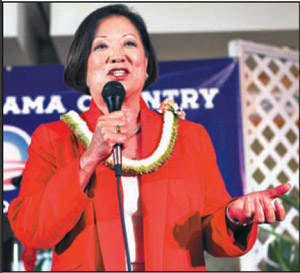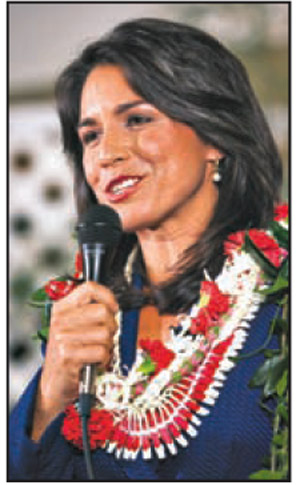Campaign 2012 Hits New Lows
Whoever wins – or has won by the time you get your MidWeek – last week’s general election contests, 2012 will go down as the most warped campaign in Hawaii’s history.The discredit goes to a host of characters.
Let’s start at the top.
President Barack Obama’s presence on the Democratic ticket this year ensured long coattails for Hawaii Democrats running for Congress. All they needed to do was promise strong support for the president during his second term, a promise that would resonate with an electorate that is 70 percent brown and had watched the first non-white President of the United States thwarted at every turn by overwhelming white congressional Republicans, a disproportionate number of whom spoke in the accents of the Old Confederacy.
So that’s what Senate candidate Mazie Hirono and District 1 Congressional candidate Colleen Hanabusa did. Too often, that’s about all they did, particularly Hirono. Neither said much about the fiscal cliff that awaits in Washington, both vowed to protect Medicare and Social Security no matter how close such a defense brings the country to bankruptcy.
The Republican alternatives, as estimable as both former Gov. Linda Lingle and former Congressman Charles Djou are, faced long odds from the day they announced their candidacies. Both tried to sell themselves as moderates who could work across the aisle with Democrats. That’s a tough deal to make when moderate Republican office-holders from Maine to California have given up on the right-wing lunacy of their party and chosen not to run for re-election.
Then there was the money. At last count, the presidential campaigns of Barack Obama and Mitt Romney and their Citizens United affiliates have spent $2 billion, a new record in which no one who abhors the buying and selling of political offices should take pride.Closer to home, Hirono and Lingle have piled television advertisement upon television advertisement (an estimated $4 million worth for Hirono, $5 mil for Lingle), at least half of which are negative, characterizing Hirono as an absentee member of Congress and Lingle as the architect of Furlough Fridays. Both charges are a good part nonsense, but when campaign coffers overflow and Super-Pacs ante up additional cash, nonsense – and worse – become the intellectual capital of the campaign.
That’s especially true in the Honolulu mayoral race. There was always going to be an enormous amount of money spent in support of the pro-rail candidate for mayor. Construction jobs, development projects, planning goals, and traffic solutions, however slight, depended on it.
But when Ben Cayetano, a candidate with total name recognition and a large ethnic base of support, announced that he was joining the contest with the single objective of stopping rail, the stakes grew higher. Pacific Resource Partnership gathered the cash and went after Cayetano with an unremitting series of ads that criticized him for running “pay-for-play” fund-raising efforts and pardoning a record number of convicted criminals, thus putting them on the streets to terrorize us all. The take-down-Cayetano effort cost PRP $2.8 million, and a “Workers for a Better Hawaii” $700,000 more.
Cayetano fought back with a defamation of character suit that will not be heard until long after this election.
Then there was the comic. Ten years ago, 22-year-old Tulsi Gabbard served one term as a Republican state legislator from Leeward Oahu. Military service and a stint of staff work with Dan Akaka later, Gabbard re-emerged as a successful non-partisan candidate for Honolulu City Council. A year later, she abandoned her office to win the contest for the Democratic nomination for Congress in the District 2. Along the way, she abandoned a long list of conservative positions on social issues – all to face a virtually unknown Republican whose platform is all about bringing back cigar smoking to public places.
Yes, the operative word is “warped.”





